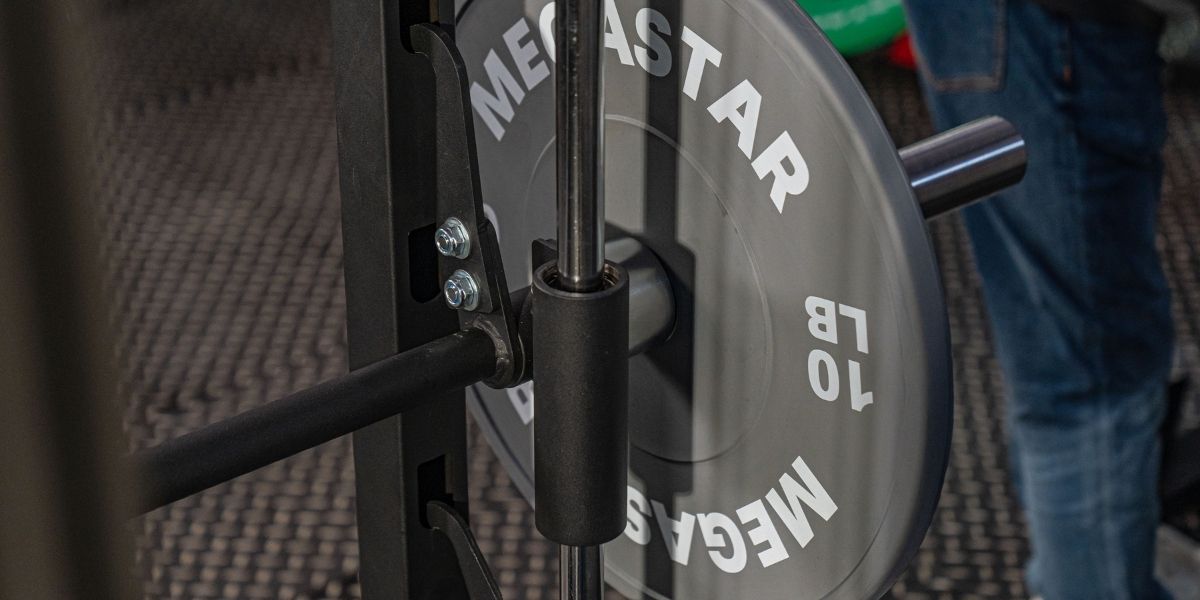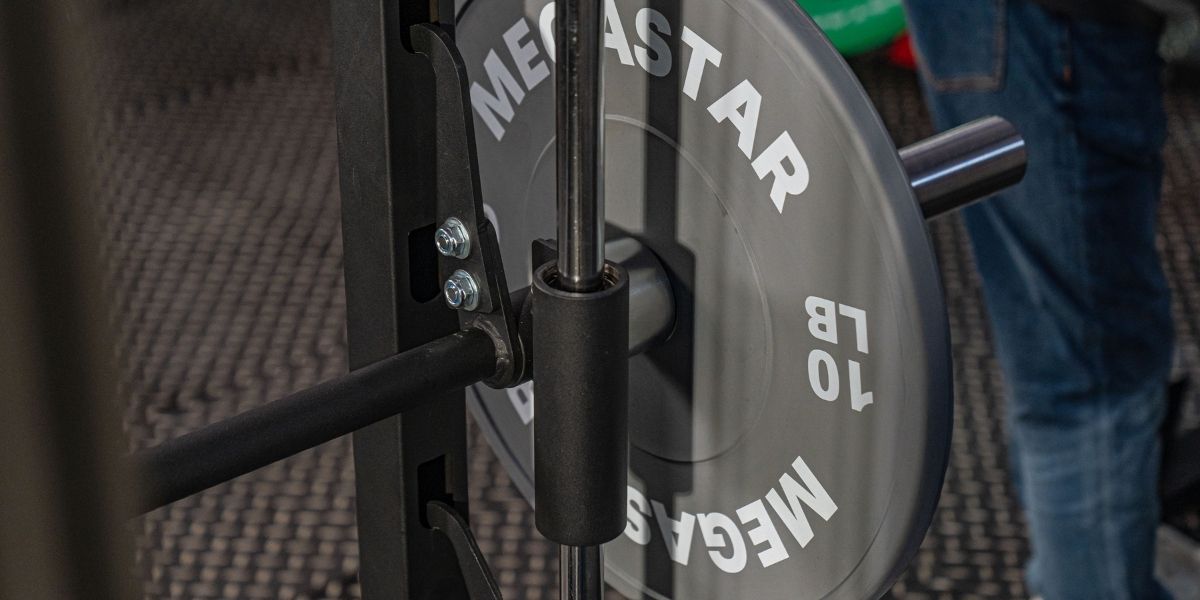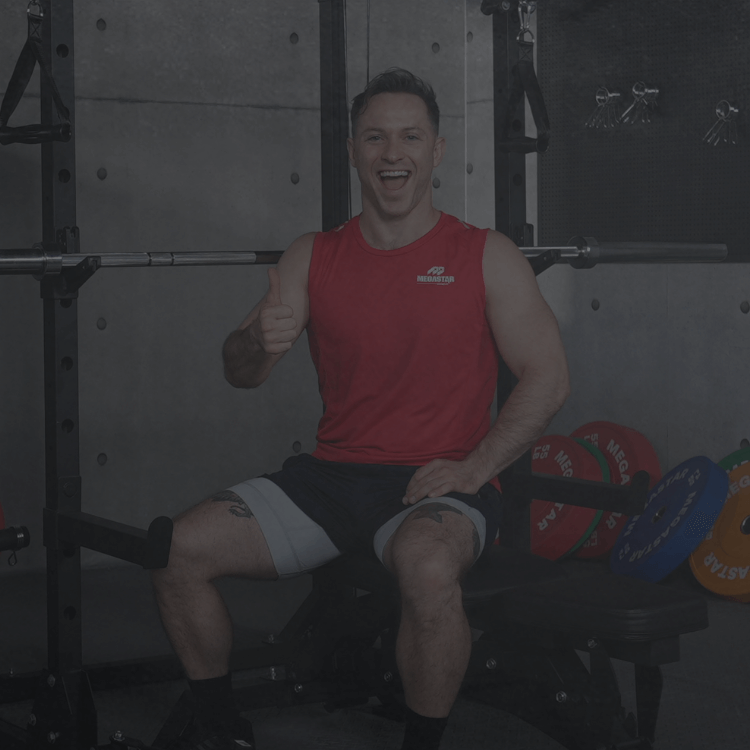Ever walked up to a Smith machine, felt the bar, and thought, "This feels way lighter than 45 pounds"? You're not imagining things. Unlike a standard Olympic barbell, there's no universal weight for a Smith machine bar, which can make tracking your progress a real headache. This article will clear up the confusion, explain why the weight varies, and give you simple ways to find out exactly how much you're lifting so you can train smarter.
Here’s a quick look at how a Smith machine bar stacks up against a standard barbell:
|
Feature |
Smith Machine Bar |
Standard Olympic Barbell |
|
Typical Weight |
15–35 lbs (can feel as light as 0 lbs) |
45 lbs (20 kg) |
|
Movement Path |
Fixed (vertical or slightly angled) |
Free-moving |
|
Counterbalanced |
Often, yes |
No |
|
Standardization |
None |
Highly standardized |
Why Smith Machine Bar Weight Varies
The weight you feel isn't just about the bar's raw mass. Several factors come into play, which is why you can’t just assume a standard weight.
Counterbalance Systems
Many commercial Smith machines have a counterbalance system. This mechanism uses hidden weights connected to the bar via cables and pulleys to offset the bar's actual weight. The goal is to make the starting weight very low, allowing users to begin with just the bar or minimal plates. This is why some Smith machine bars feel practically weightless.
Rail Angle and Friction
The angle of the guide rails impacts the "effective" weight.
- Vertical Rails: On a machine where the bar moves straight up and down, you are lifting against the full force of its weight.
- Angled Rails: Many modern Smith machines have slightly angled rails (around 7-12 degrees). This allows for a more natural movement path for squats and presses. However, this angle means the rails support a small portion of the weight, making the bar feel slightly lighter than its true weight. Friction from the bar's bushings sliding along the rails also reduces the resistance slightly.
Differences in Models
The make and model are the biggest variables.
- Commercial Machines: Some brands often use heavier bars but incorporate sophisticated counterbalance systems.
- Home Gym Machines: All-in-one home gym units usually have lighter, non-counterbalanced bars to keep costs and shipping weight down.
- Plate-Loaded Cages: Some power racks come with a Smith machine attachment. These are often simpler designs with non-counterbalanced bars that weigh around 30-35 pounds.
How to Find the Weight of Your Smith Machine Bar
Do not guess; instead, get the exact number. It only takes a minute and will make your training much more accurate.

Ask Gym Staff or Check for Labels
This is the easiest first step. Ask someone at the front desk or a personal trainer; they can usually tell you the weight. Many gyms also place a sticker or small plaque directly on the machine that lists the starting resistance or bar weight.
Look Up Your Smith Machine Model Online
If you can find the brand and model name on the machine (e.g., "Megastar Fitness"), a quick Google search will often lead you to the manufacturer's spec sheet. This document will list the exact starting resistance.
Try Simple Methods to Measure It Yourself
If the first two options don't work, you can easily measure the bar's effective weight yourself with a few simple tricks.
Easy Ways to Measure the Bar Yourself
These methods will help you find the effective weight, which is the resistance you actually lift.
The Plate Balance Method
This is the most practical method for a counterbalanced machine.
- Set the Bar: Position the empty bar at a comfortable height, around your waist.
- Add Small Plates: Add small weight plates (like 2.5 lbs or 5 lbs) to one side of the bar.
- Find the Tipping Point: Gently push the bar up and let it go. If it stays up or moves slowly, the plates aren't heavy enough. Keep adding small plates to that one side until a tiny nudge makes the bar slowly drift downwards.
- Calculate: The total weight of the plates you added to that single side is the approximate effective weight of the bar.
The Bathroom Scale Method
This works best for non-counterbalanced machines with a noticeable weight.
- Position the Scale: Place a sturdy bathroom scale directly under the bar's center.
- Lower the Bar: Carefully unhook the bar and gently lower it until it rests entirely on the scale.
- Read the Weight: The number on the scale is your bar’s weight. Be sure to do this gently to avoid damaging the scale.
The Luggage Scale Method
A digital luggage scale with a hook is another great tool.
- Attach Securely: Loop a durable strap (like a lifting strap) around the center of the bar. Hook the luggage scale onto the strap.
- Lift and Read: Unrack the bar and lift it an inch or two using the scale.
- Check the Reading: The number displayed on the scale is the bar's weight.
How It Affects Your Workouts
Knowing the weight of the bar is more than just trivia; it is necessary for making real progress.
Adjusting for Bar Weight in Your Plate Math
The most obvious benefit is getting your total weight right. If you think the bar is 45 lbs but it's only 15 lbs, you're lifting 30 lbs less than you're logging.
Total Weight = (Weight of Plates) + (Effective Bar Weight)
Accurate math is the foundation of progressive overload.
Why It Matters for Accurate Tracking and Progression
If you don't know the starting weight, you can't accurately track your strength gains. Are you getting stronger, or did you just switch to a machine with a heavier bar? Consistent tracking is key to knowing if your program is working.
What to Do After You Know the Bar Weight
Once you have the number, put it to use.
Log the Bar Weight in Your App or Notebook
Make a note of the bar's weight for the specific machine you use. Add a note like, "Megastar Fitness Smith Machine (near windows): 20 lb bar."
Adjust Your Lifting Numbers
Go back through your recent logs and correct your lifting totals. This will give you a more accurate baseline to work from moving forward.
Stick With the Same Machine
For maximum consistency, try to use the same Smith machine for your key lifts whenever possible. This eliminates one major variable, making it easier to track your progress week to week.

Eliminate the Guesswork With Your Own Machine
The article mentions that for consistent results, you should "stick with the same machine if possible." In a busy commercial gym, that's not always an option. The easiest way to guarantee consistency and know the exact specs of your equipment is to build a home gym.
If you're ready to take full control of your training variables, check out the home gym solutions from Megastar Fitness. For example, Our Smith Machine are a complete system that combines a Smith machine, power rack, and functional trainer. The best part? The specs aren't a mystery. You'll know the exact starting resistance of the bar from day one, enabling the precise, accurate tracking this article discusses. It’s the ultimate way to ensure your numbers are always on point.
FAQs About Smith Machine Bar Weight
Is the Smith machine bar weight included in the total?
Yes, absolutely. Just like with a free barbell, the total weight you lift is the weight of the bar plus the weight of all the plates you add to it.
Are all Smith bars counterbalanced?
No. While most modern commercial machines are counterbalanced to provide a low starting resistance, many older models, home-gym units, and simpler designs are not.
Why does the bar feel lighter or heavier than expected?
This is usually due to the counterbalance system. If it feels almost weightless, it’s heavily counterbalanced. The angle of the rails and friction can also make the bar feel slightly lighter than its actual mass.
Can I use Smith machine lifts to estimate my free barbell lifts?
Not directly. The Smith machine stabilizes the weight for you, which means your stabilizer muscles don't have to work as hard. Because of this, most people can lift more on a Smith machine than with a free barbell. Use your Smith machine numbers to track progress on that specific machine, but don't assume it will translate 1-to-1 to a free-weight equivalent.
Conclusion
So, the next time you step into the Smith machine, you can ditch the confusion. The bar's weight isn't a 45-pound standard; it's a variable that depends entirely on the machine's specific design, counterbalance system, and even the angle of its rails.
It might seem like a small detail, but it’s the key to honest, accurate training. When you know the true starting weight, you can properly track your progressive overload, know your numbers are correct, and be confident that you're getting stronger based on real data, not guesswork.
Your main takeaway is simple: Never assume. Always confirm. Take the 60 seconds to check the label, ask the staff, or use one of the simple measurement tricks we covered. This small step will make a huge difference in the accuracy of your workout log and the success of your long-term progress.







